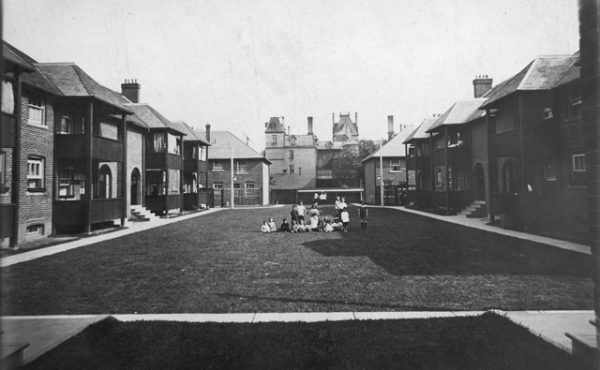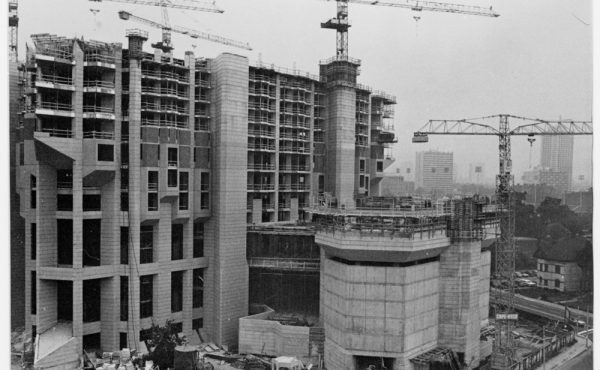
To help mark the War of 1812’s bicentennial year, staff from the Archives of Ontario will be posting a series of articles highlighting their related collections. Their records on the war document battles and battlefields and offer first-person accounts on what life was like during this time. Documentary art and illustrations — samples of which you’ll see in these posts — also show us the landscapes of the day and how much our spaces have changed since then.
Building a Legend: The Story behind the Brock Monument
By Sean Smith (senior archivist, Archives of Ontario)
There were many memorable moments over the course of the War of 1812, but none has been as vividly characterized as the death of Isaac Brock. It remains the single most iconic event of the war and perhaps with good reason.
On the morning of October 13, 1812, Major General Isaac Brock was shot by an American soldier. He was leading about 50 British troops in a charge against a group of Americans perched on the higher ground overlooking the town of Queenston. Brock’s men continued with their struggle, despite their fallen leader. In the end, they were able to push the Americans back, but it was Brock’s bravery and heroism that was remembered as he was buried three days later on the grounds of Fort George.
Born in 1769 on the Isle of Guernsay, Brock joined the British military at the age of 15. He spent the prime years of his career in Canada, arriving in the colony with his regiment in 1802. In the years leading up to 1812, he was stationed in Montreal, York, and Fort George. His work focused on preparing the colony for what seem like an imminent invasion by the upstart Americans.
There is no disputing that Brock’s career was full of accomplishments. Early during the War of 1812, he was identified with the surrender of Detroit, a battle he waged with Shawnee Chief Tecumseh. This accomplishment alone would have been enough to secure a legend, but his premature death on Queenston Heights provided a burgeoning nation with the material to create a hero.
By 1814, with the war still ongoing, memorials to Brock were already underway in his British homeland. The parliament of Upper Canada, for its part, had passed a motion to commemorate him in the form of a monument near the spot where he was killed. On October 13, 1824, Brock was laid to rest at the foot of the first Brock monument along with his aide de camp, Lieutenant Colonel Macdonell.
 It isn’t known whether this monument was ever completed, but this quickly became a moot point when it was partially blown up in 1840. Although it was never discovered who was responsible, it was largely assumed the act was carried out by the anti-establishment forces of the 1837 Rebellion. As such, the attack on the Brock monument was seen by many as the final assault on Britain by the forces that led to the War of 1812.
It isn’t known whether this monument was ever completed, but this quickly became a moot point when it was partially blown up in 1840. Although it was never discovered who was responsible, it was largely assumed the act was carried out by the anti-establishment forces of the 1837 Rebellion. As such, the attack on the Brock monument was seen by many as the final assault on Britain by the forces that led to the War of 1812.
At a meeting on Queenston Heights on July 30, 1840, the monument was framed as a symbol of “on the one hand: unmitigated execration of human depravity and abhorrent cowardice; and on the other, admiration of resplendent virtue and gratitude for heroic deeds.” Brock and Macdonell’s bodies were removed from their resting place and reinterred in Queenston, while the task of rebuilding was considered.
The Brock Monument Committee was established shortly after the meeting on Queenston Heights. Its principle task was to raise funds via subscriptions and government funding to rebuild a bigger and better monument. The destruction of the first Brock monument seemed to embolden the conservative, loyalist forces in the colony and the work of the Committee took on an almost evangelical tone.
The person or people who destroyed Brock’s monument were described in the Committee’s resolutions as a “destroying demon…crawling from a reptile hiding place, with midnight malevolence.” Brock’s tomb, on the other hand, was spoken of as a sacred spot “where religious feelings are inspired, and where we thankfully bless our God for the preservation of our Country — and such a spot was indeed found around General Brock’s grave!”
The Committee received subscriptions and letters of support from members of the elite and the military. There were also numerous letters of support from First Nations, who were offended by the desecration of the grave of “the Great Chief” Sir Isaac Brock.
Momentum for the reconstruction of the monument was considerable in the Committee’s early stages, but despite having selected a design from 35 submissions, nothing was built for over ten years. In 1852, the Committee ran another design competition with far fewer submissions. At a meeting of August 9, 1852, a design by William Thomas was accepted.
The foundation stone for the new monument was laid at a ceremony held on October 13, 1853. Brock and Macdonell were buried for the fourth time. The official inauguration of the new monument did not take place until 1859. A slow process, but it seemed the country needed an enduring image of one man selflessly leading his troops against “worthless aliens and disaffected exiles” to ensure “legitimate order and tranquility of our country will be duly maintained.”
To learn more about the War of 1812 and our related collections, visit our website at ontario.ca/archives.
Images:
Death of General Brock, 1960 / Roy Greenaway (1891-1972), oil on canvas, Government of Ontario Art Collection, 623021
COURTESY ARCHIVES OF ONTARIO
S.E. view of Brock’s Monument on Queenston Heights as it appeared on May 9th AD 1841. Thomas Glegg fonds, F 596 (B410695), Archives of Ontario
ASA work order 107653



